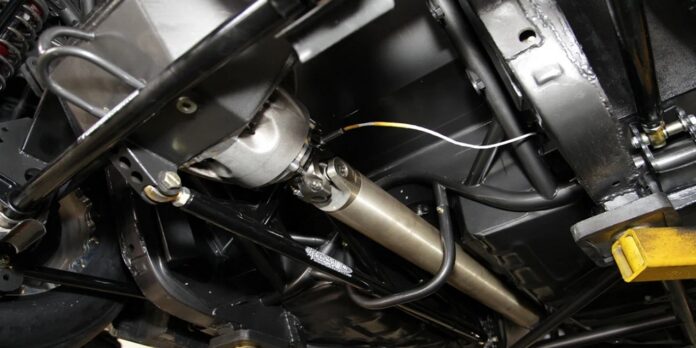A car’s drive shaft is a crucial part of the engine system. It enables the vehicle to move by transferring the torque from the transmission to the wheels. The function and part of the drive shaft in automobiles, as well as its significance and typical issues, will be covered in this article. Continue reading this article to have an idea before purchasing a driveshaft for your vehicle. Several websites sell these products online; you must use your wits and go for a trustworthy website.
What is a Drive Shaft?
The drive shaft, a cylinder-shaped piece of metal, links the car’s transmission to the front or back axles. It comprises a long, hollow tube with universal joints on either end that enable it to flex and bend in response to the motion of the vehicle’s suspension.
Materials Used in Drive Shafts
Typically, drive shafts are made of steel or aluminum, providing excellent strength and durability. Driveshafts of steel are stronger and heavier, making them perfect for heavy-duty applications. Driveshafts made of aluminum are lighter, which lowers the vehicle’s overall weight and increases fuel efficiency. Driveshafts made of aluminum, however, are less resilient than steel ones and might need more frequent maintenance.
Role and Function of the Drive Shaft
In a car’s engine system, the drive shaft is essential. Its primary job is to transmit transmission torque to the wheels, which enables the vehicle to move forward or backward. The drive shaft is spun as the gearbox shifts gears, and the differential rotates the wheels.
Because it must withstand the engine’s power and transfer that force to the wheels, the drive shaft is made to be strong and long-lasting. High-strength materials like steel or aluminum are used in their construction, and it is designed to be light and balanced to minimize vibration and enhance performance.
Common Problems with the Drive Shaft
Like any other auto part, the drive shaft can experience issues over time. The following are a few of the motor shaft’s most typical problems:
- Vibration: The vehicle may vibrate while you’re driving if the drive shaft is out of balance or the universal joints are worn.
- Noise: When the vehicle is moving, a universal joint that is worn out or damaged may make a clunking or knocking sound.
- Failure: If the drive shaft is worn out or damaged, it could stop working, stopping the car from moving.
- Grease leaks from the drive shaft’s universal joints, which are grease-sealed. The universal joint may be harmed if the grease leaks due to worn or broken seals.
Conclusion
A crucial part of the powertrain system of a vehicle is the drive shaft. It is in charge of transferring the torque from the gearbox to the wheels, which enables the car to move. The rear-wheel-drive and front-wheel-drive shafts are the two primary drive shafts used in automobiles. Although the drive shaft is made to be sturdy and long-lasting, it can eventually experience issues such as vibration, noise, failure, and oil leakage. These problems can be avoided, and routine upkeep and inspections can confirm the drive shaft’s functionality. Although there are several websites where drive shafts are available for purchase, before ordering one for your car, check the reliability of the website to avoid any inconvenience.










